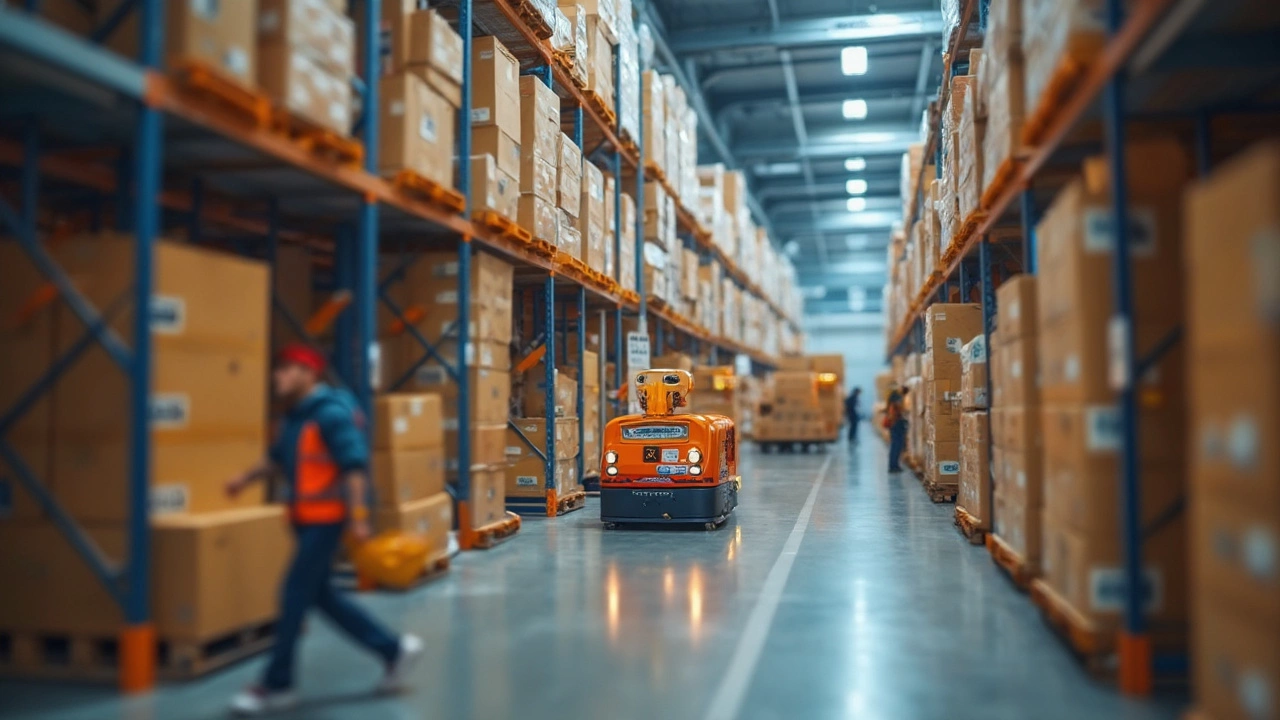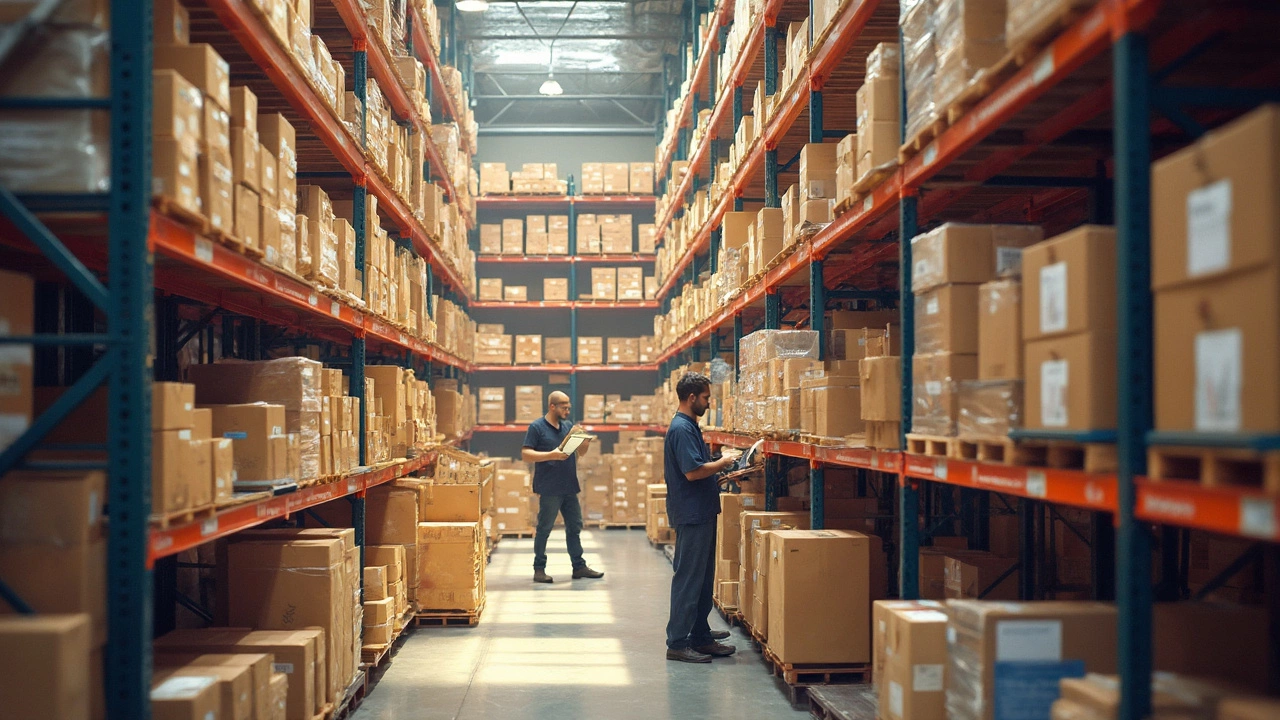Category: Ecommerce Logistics - Page 3
May 13, 2025
Evelyn Wescott
0 Comments
This article makes sense of what e-commerce really means, not just as an online store but as a massive system that moves goods from warehouse to your doorstep. You'll see how everything from big brands to your friend's handmade crafts on Etsy fall under the e-commerce umbrella. The article dives into real-life examples, shows how logistics work behind the scenes, and throws in handy tips to shop or sell smarter. Explore what makes e-commerce run smoothly and spot the trends shaping how stuff gets to your door. Super practical for anyone buying or selling online.
May 10, 2025
Evelyn Wescott
0 Comments
E-commerce logistics specialists keep online shopping running smoothly, from packing to delivery. They manage inventory, shipping, and returns, making sure customers get what they order on time. This article explains what their day-to-day looks like, key skills they need, and how they find solutions when things go wrong. Learn what sets a great logistics specialist apart and get real tips for companies looking to step up their e-commerce game. If you shop—or sell—online, you’ve probably benefitted from their work without even noticing.
May 9, 2025
Evelyn Wescott
0 Comments
Ever wondered what it actually takes to start Amazon logistics? This article breaks down the real costs, points out often-missed expenses, and shares practical tips for getting started. Whether you’re curious about how Amazon’s DSP program works, or if you’re ready to dive in, you’ll find up-to-date numbers, potential earnings, and honest facts from 2025. We’ll also flag common pitfalls and smart ways to save. Think of this as your realistic guide to launching an Amazon logistics business.
May 5, 2025
Evelyn Wescott
0 Comments
Are e-commerce and online selling just two phrases for the same thing, or is there a real difference? This article breaks down what each term really means, how logistics fit in, and what it means for anyone selling online. Get clear explanations, real-life examples, and straightforward tips that demystify the world of online businesses. Understand how your choices affect shipping, order management, and customer experience. Whether you’re a newcomer or looking to up your logistics game, this guide has useful takeaways for everyone.
April 30, 2025
Evelyn Wescott
0 Comments
Curious about which eCommerce store rules the USA? This article digs deep into the top player, showing why they’re ahead in the game. Discover how logistics, customer service, and tech drive this giant’s success. Learn fun facts and get practical tips for sellers and buyers. See what makes the biggest platform tick in 2025.
April 21, 2025
Evelyn Wescott
0 Comments
Thinking of starting an eCommerce business but your bank account’s looking bleak? No problem—there are real workarounds that don’t require you to shell out tons of cash up front. This article breaks down exactly how you can launch an online store from scratch, even if you’re starting with nothing. From free platforms to clever logistics tricks, we’ll dig into the details most guides skip. Prepare for honest talk about the challenges and super practical solutions that work in 2025.
April 18, 2025
Evelyn Wescott
0 Comments
E-commerce isn't just about shopping from your couch—it's completely changed how products move from sellers to buyers. This article unpacks the big reasons e-commerce is booming, especially when it comes to logistics. We'll break down faster shipping, better inventory control, easier returns, and how even small businesses can ship worldwide. Expect practical tips and real-life examples to make sense of what e-commerce really means for modern shopping.
April 4, 2025
Evelyn Wescott
0 Comments
E-logistics has revolutionized the e-commerce landscape, streamlining the way goods travel from suppliers to customers. It plays a crucial role in reducing delivery times, optimizing supply chain operations, and enhancing customer satisfaction. This article explores the benefits of e-logistics, illustrating how it supports efficient inventory management and cost savings. Get insights into how technology drives these logistics strategies.
March 15, 2025
Evelyn Wescott
0 Comments
Logistics plays a crucial role in the success of e-commerce by ensuring products reach customers swiftly and efficiently. By optimizing supply chains, leveraging technology, and streamlining processes, logistics companies boost their profits while enhancing customer satisfaction. Key factors like inventory management, last-mile delivery, and technological advancements contribute to their revenue streams. Understanding these components can help businesses maximize their logistics capabilities and improve their bottom lines.
March 9, 2025
Evelyn Wescott
0 Comments
Different types of e-commerce sites excel through effective logistics strategies, allowing seamless customer experiences. While some platforms succeed with robust inventory management, others thrive by focusing on quick delivery. Understanding what makes these sites successful can offer valuable insights for businesses seeking to improve their own online operations. This article delves into the variety of approaches e-commerce giants take to optimize logistics.
March 4, 2025
Evelyn Wescott
0 Comments
E-commerce shipping is a key component of online retail, ensuring products move from warehouses to customers efficiently. This article explores shipping methods, the significance of inventory management, and the role of technology in streamlining processes. With tips on reducing costs, including bulk shipping options and choosing the right carriers, e-commerce businesses can enhance their delivery strategy and customer satisfaction. Dive into the complexities and opportunities of e-commerce logistics to better optimize your shipping practices.
February 16, 2025
Evelyn Wescott
0 Comments
E-commerce and Amazon might seem synonymous at a glance, but they differ in crucial ways. While e-commerce refers to the vast domain of buying and selling goods and services online, Amazon is a giant platform within this universe, shaping how e-commerce operates today. This article explores their distinctions, focusing on how Amazon's logistics prowess sets it apart. Learn about their unique features and find tips for navigating the e-commerce landscape, especially when considering Amazon's influence.















